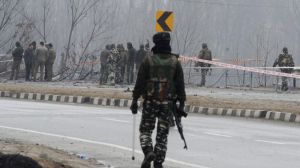EMIs eat into marketing executive’s holidays, hilsa
RK Karmakar, 43, and a marketing executive with an FMCG company, never wanted to take a home loan for constructing the first-floor of his house in the heart of the city.

RK Karmakar, 43, and a marketing executive with an FMCG company, never wanted to take a home loan for constructing the first-floor of his house in the heart of the city. But the lack of proper drainage in the Assam capital reduced his once-posh locality into a water-logged one. So, he had little choice but to go for extension work. He finally approached HDFC for a loan in February 2005. By then, the prices of construction material had already soared much higher than what he had estimated, forcing him to go for a second loan in September 2006.
“Initially, I took a loan of Rs 9.9 lakh, opting for a variable interest rate of 8.25 per cent with an EMI of Rs 8,436. But that hardly lasted about 18-19 months, when the bank enhanced the interest rate to 10.50 per cent,” Karmakar said. And with three revisions since he borrowed, his EMI has jumped from Rs 8,436 to Rs 10,235, sending his plans haywire.
Worse, spiralling prices of construction material compelled Karmakar to go for a second loan of Rs 9 lakh within 18 months of the first loan. “In May 2007, when I went for the second loan, carrying an interest rate of 9.5 per cent, the EMI was Rs 8,390. The rate, however, has jumped in the last two years, and today, I am paying 10.75 per cent, and the EMI has gone up to Rs 9,444,” says Karmakar, who has a family of five, including aged mother and two sons aged seven and two. His wife contributes her bit — a few hundred rupees — to the family income by working in a private preparatory school in the neighbourhood.
Rising interest rates and EMIs have changed the entire lifestyle of the Karmakars. “The first and foremost thing that I was compelled to do is to cut down on my SIP (systematic investment plans),” he said, pointing out that he had already opted out of two SIPs in the past two years. His monthly investment of Rs 7,000 has almost been halved to Rs 4,000 now.
Rising food prices have ensured that hilsa or a chitol (fish varieties) are now more associated with feasts. “Eating fish is part of our custom and cultural identity. But of late, we have almost forgotten what an ilish (Assamese for hilsa) or a chitol looks like. These two class I fish today cost anywhere between Rs 300 and Rs 400 per kg, and we have thus made their entry into our kitchen only an annual ritual, managing the normal menu with the less costly lashim-bhangon or rou,” he added.
With avian flu occurring in neighbouring West Bengal, Tripura and Manipur and also in some Assam districts, for a large section of middle-class educated people in Guwahati with a higher level of awareness, chicken and eggs have already been struck out of the regular weekly shopping list. Inviting friends and relatives for lunch or dinner has also gone down at the rate at which the EMI has gone up, he added.
Karmakar has a car, but hardly does he take it out once a week. “Most of the time when I have to go out to other parts of the city, I take my scooter. And if it is within a one-km radius, which includes my office, I prefer to walk. It is also good for my health,” he says. They have also started avoiding attending wedding receptions if those are in far-away localities.
“The worst thing that has happened is that we have not gone on a holiday for almost three years now,” said Karmakar, pointing out that he has been also successfully rejecting his wife’s numerous pleas to take her along while he goes out on an official tour. “I know we will save a lot of money by taking her along, because that will only involve her travel expenses. But that too looks difficult,” he added.
Tomorrow: A daughter tries to help out her father: The story of a Dhanbad PSU executive
Photos





- 01
- 02
- 03
- 04
- 05


























